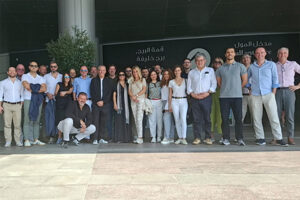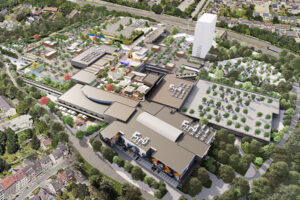The Q4 2018 saw commercial real estate volumes of about €3.5 billion – one of the best fourth quarters of the last five years and the third best historically.
The activity recorded in the second half of 2018 has reduced the investments percentage gap compared to 2017: from around -35% in the first half of the year to the current about -20%. In details, 2018 saw investment volumes above €8.6 billion (for about 220 transactions) compared to €11 billion in the previous year (for about 180 transactions).
There are many elements that determined the result of 2018. Among the main factors, a lack of product (which is entirely normal after a record year such as 2017), yields for many asset classes in line with those of more mature countries, the absence of large portfolio deals (less than 20 transactions exceeding €100 million) and, not last, the political uncertainty during the first months of the year.
However, the closure of 2018, at more than €8 billion clearly confirms that the Italian commercial real estate market size had risen in recent years – exceeding the pre-crisis level.
Which asset classes were successful in 2018?
The main volume originator was the Office sector (with around €3.5 billion in total, around -10% compared to 2017), traditionally the most liquid asset class that “protect” from risks even in situations of uncertainty. Indeed, despite the lack of office product since the end of 2017, the relative contribution of this asset class increased by five percentage points in twelve months from around 35% in 2017 to 40% in 2018. Cristiana Zanzottera, head of BNP Paribas Real Estate Research Department in Italy said: “To this result has certainly contributed also the growth by 30% of the activity in Rome Office market. The Italian capital has benefit from the high prices of Office products in Milan in a context of general greater caution expressed especially by international investors”.
The Retail sector trend was positive in 2018 recording around €2.2 billion recorded (about 25% of total Italian volumes), in continuity with recent years performance. In 2018, the main originator of Retail volumes were Shopping Centres deals, which contributed approximately €1.2 billion to the total (the second highest value in the last 10 years for this sub-segment). To be underlined however in the fourth quarter of 2018, the High Street important contribution, accounting for about 60% of the total Q4 Retail volumes – equal to €370 million.
With about €1 billion each, the Logistics and Hotel sectors followed in terms of performance in 2018. This is the best Logistics result ever (if 2017 is read net of the CIC-Logicor indirect investment of about €600 million) achieved thanks to a high number of transactions which testify the specific interest, now very evident, for this type of product.
In 2018, the “Alternative” sector (care homes, student housing, data centres, barracks, cinemas) recorded investments for about €800 million with a strong prevalence of deals related to care homes (for about €400 million).
As far as prime net yields are concerned:
• The Milan Offices product in Q4 was stable at 3.30%. In Rome, after four consecutive quarters at 4.15%, Q4 was contracted to 4%.
• Retail saw a decompression for Shopping centres prime net yield, from 4.90% recorded till the end of 2017 to the current 5%. Stability for Milan High Street product at 3% and for Rome High Street at 3.30%.
• Stability for the Logistics product at the end of 2018 at 5.25%.
Zanzottera said: “While the liquidity deployed to Italy is still significant, international investors are increasingly expecting to obtain a premium for the country risk. For this reason in 2018 the interest has increased for cheaper location and asset classes resulting more competitive with respect to more mature international contexts”.
Zanzottera concluded: “Our market is increasingly polarised between domestic investors (mainly core) and international investors surely willing to invest in Italy but only under certain conditions. The challenge in the coming years will be played on the ability of Real Estate operators to express the right values in order to favour a good match between supply and demand.”





